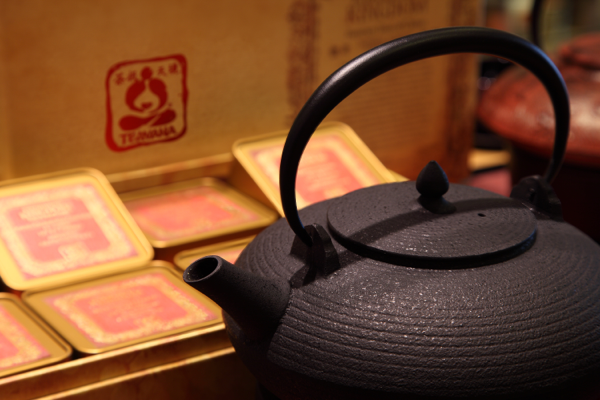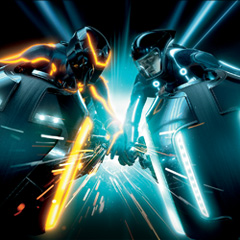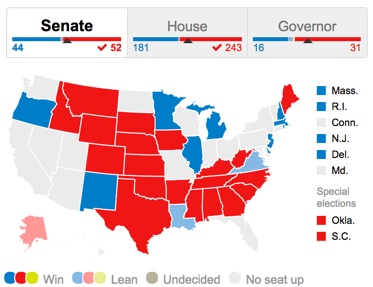
Last year at the 2012 ASUG SAP BusinessObjects User Conference, I gave a presentation entitled Secrets of a Business Intelligence Barista. In it, I made the case for Business Intelligence Competency Center, or BICC, being as customer-friendly and service-oriented as a neighborhood Starbucks. Just as Starbucks describes their stores as a “third place” between home and work. I shunned the traditional definitions of a Business Intelligence Competency Center and instead described it as follows:
The business intelligence competency center is a third place between the cubicle and corporate IT that provides a collaborative environment to solve business challenges and align execution to organizational strategy.
If you couldn’t tell, I like Starbucks a lot. I visit one at the beginning of nearly every work day. I try to read every article or book I can about their organization (see related book reviews). Early this year, I became a shareholder. So shortly after Starbucks purchased the tea retailer Teavana, my wife and I visited one for the first time.
Sadly, the Teavana experience was the antithesis of the Starbucks experience.
If @Starbucks baristas start acting like @Teavana employees, I’ll go back to drinking @McDonalds coffee again. — Dallas Marks (@DallasMarks) May 8, 2013
The high-pressure purchasing experience was so miserable, I nearly walked out of the store without purchasing any tea. But curiosity as a shareholder got the best of me, so I let the experience play out. The store employee pushed really hard to sell me way more tea than I wanted as well as an expensive tin to keep it in. When I got home and angrily Googled about the “Teavana Experience,” I found out that my experience was not isolated. I’ve included some links below if you’re interested in reading more.
Business intelligence teams can learn best practices from @Starbucks, but only worst practices from @Teavana. Blog post coming soon.
— Dallas Marks (@DallasMarks) May 8, 2013
If only I had Googled before going into the store instead of after. As you can see, I tweeted about my Teavana Experience back in May and it’s taken me a few months to collect my thoughts and relate my Teavana Experience to business intelligence.
Unfortunately, our users can interact with the BICC expecting a “Starbucks Experience” only to walk away with a disappointing “Teavana Experience”. But it doesn’t have to be that way. Let’s look at three ways our BICC team can turn a Teavana Experience back into a Starbucks Experience.
The tea users brew “at home” doesn’t taste like the store samples
At Teavana, there’s never a sample that just contains one variety of tea – it’s always two. And the tea is brewed much stronger in the store than the typical consumer will brew at home. But the result is frequently that a customer cannot replicate the taste of the in-store experience. Similar situations occur in business intelligence when a tool isn’t as easy to use or as flexible as it appeared either during the vendor’s demo. This situation can also occur over time as turnover in the user community erodes the original population of users that received training.
Opportunity: improve user adoption through increased education- both at time of delivery and on a periodic basis such as an internal user group.
Users end up spending more time and money than originally budgeted- and still don’t get what they want
At Teavana, customers who wish to only sample a few ounces of tea are bullied into taking a whole pound. And an expensive tin to keep it in. In my experience, the new trainee that was so helpful showing my wife and I around the store was forbidden to ring us up at the counter. And afterwards, I can see why. He undoubtedly had not yet been brainwashed in the art of increasing the amount of the sale. This sensation can occur with business intelligence projects, particularly when a traditional waterfall design methodology is used. Business users articulate requirements, IT labors over those requirements in near isolation, and the finished product- whether delivered on time or not- doesn’t effectively solve the users’ business problem. Then the finger pointing begins.
Opportunity: Agile methodologies. Beware- going agile can be radical shift both for users and for IT.
Customers are angry after a negative personal encounter with staff
During my first and only Teavana experience, I grew increasingly frustrated at the checkout counter as the Teavana employee kept trying new and innovative ways to increase the amount of the sales transaction. I reached a point where I was ready to halt the purchase and simply walk out of the store. I left the store vowing never to return again. So far, I’ve kept my promise. And I’ve seen no signs from Starbucks that they’ve redesigned the customer experience at Teavana. Instead, the company seems to be focusing on its other acquisitions like La Boulange and Evolution Fresh. Perhaps- like me- the executives at Starbucks have buyers remorse over Teavana.
Opportunity: Train BICC support staff in customer service skills. No budget? Take a team field trip to Starbucks. And as you’re sitting at a table sipping lattes, discuss as a team what makes the Starbucks experience special. Was there an unhappy customer during your visit and how were they treated? There’s many lessons that your team can learn from friendly baristas in green aprons. Include customer service skills in the hiring and review processes.
Coda (9:00 PM on 10/23/2013):
How ironic that the day I finally post this article that Starbucks announces the grand opening of a Teavana tea bar in New York City.
We’re excited to debut the new @Teavana Fine Teas + Tea Bar in NYC today. It’s the start of something special: http://t.co/5xWKKbgRAN
— Starbucks News (@Starbucksnews) October 23, 2013
Links about The Teavana Experience
- Starbucks Offers Even More Choices and Benefits to My Starbucks Rewards Members (October 8, 2013)
- Teavana’s Sales Tactics (April 30, 2013)
- The Problem with Teavana Teas and the Teavana Experience (March 17, 2013)
- Teavana’s dirty secret: Why the tea you brew doesn’t taste like the store samples (February 15, 2013)
- Teavana – A first look (January 16, 2013)
- My Teavana Experience (January 28, 2012)
- My Love/Hate Relationship With The Folks At Teavana (January 3, 2011)
- Teavana Doesn’t Get It (September 28, 2010)
- Teavana Salesperson Throws Involuntary Tea Party (July 8, 2009)
Have you had a Teavana experience at your local shopping mall? While interacting with your organization’s business intelligence competency center? Both?



Interesting. My experiences at the two local Teavana branches were the polar opposite of yours. Rather than being too aggressive, they were too passive. I still know very little about tea, and was overwhelmed by the varieties and lingo. Despite asking for guidance and advice, they were only interested in filling my order.
Which, admittedly, is still both strikingly different from Starbucks, and an important experience to avoid as a BICC.
Ironically, Starbucks announced today that it is opening its first Teavana tea bar in New York City tomorrow on the upper east side. It is a completely different concept from a traditional Teavana mall store and will focus on selling hand-crafted beverages ala Starbucks rather than loose leaf tea (although it will do both).
http://www.usatoday.com/story/money/business/2013/10/23/starbucks-teavana-fast-food-tea-tea-houses/3146149/